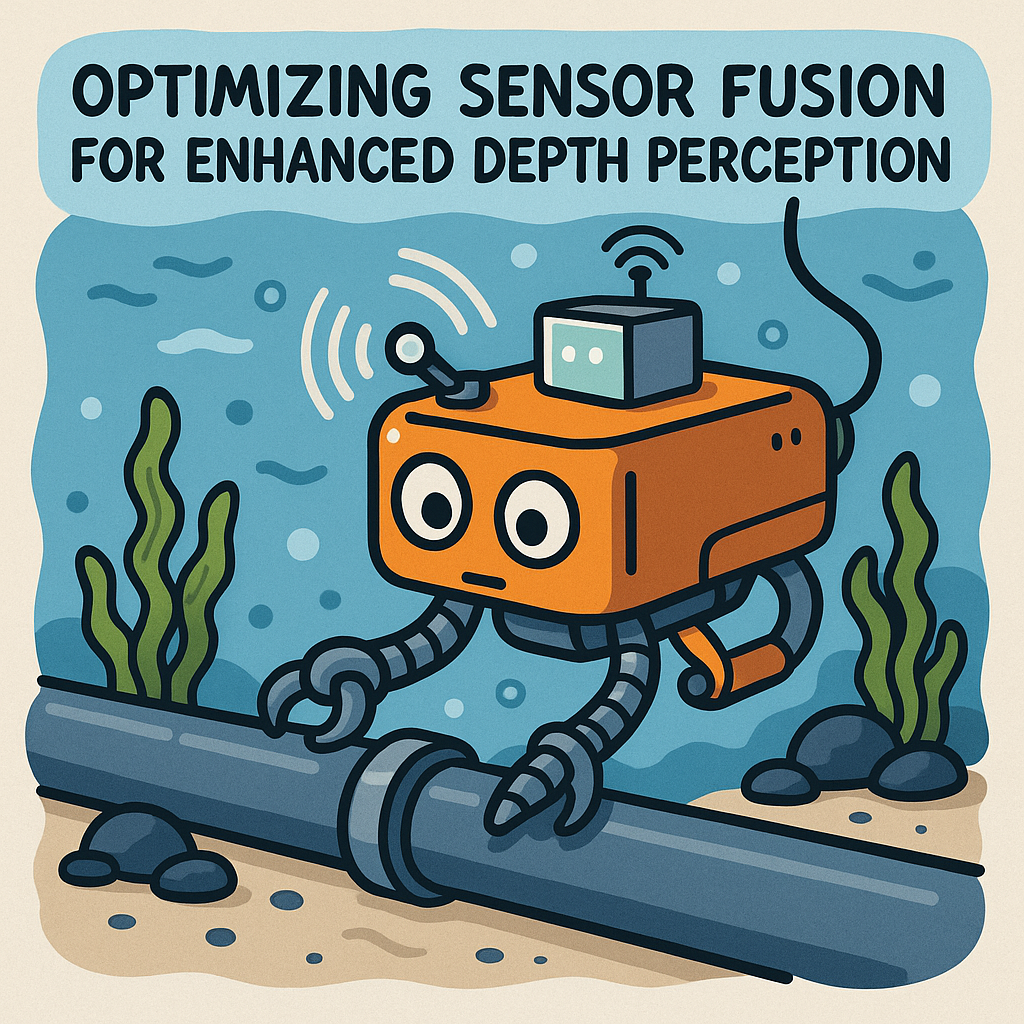Understanding the Challenges of Underwater ROVs in Pipeline Inspection
Underwater Remotely Operated Vehicles (ROVs) have become indispensable in the realm of pipeline inspection. Their ability to navigate complex underwater environments while providing real-time data has revolutionized the way we maintain and monitor subsea infrastructure. However, achieving precise depth perception is a significant challenge due to factors such as varying water conditions, limited visibility, and the need for accurate sensor integration.
The Importance of Depth Perception
Depth perception is crucial for ROVs as it directly affects their ability to navigate, inspect, and interact with the environment. For pipeline inspections, accurate depth data ensures that the ROV can maintain a safe distance from the pipeline, avoid obstacles, and execute tasks like valve manipulation or debris removal effectively. Without optimized sensor fusion algorithms, ROVs may struggle with depth estimation, leading to costly errors and inefficiencies.
Sensor Fusion: The Heart of Depth Perception
At the core of enhancing depth perception in ROVs is the implementation of sensor fusion algorithms that combine data from multiple sensors, such as sonar, cameras, and inertial measurement units (IMUs). Each sensor type has its strengths and weaknesses:
- Sonar: Excellent for measuring distances in murky waters but may struggle with object detection due to limited resolution.
- Cameras: Provide high-resolution images and can detect surface features but are limited by light conditions and may not function well in low visibility.
- IMUs: Provide orientation and acceleration data, which is essential for maintaining stability but are sensitive to drift over time.
Designing Optimal Sensor Fusion Algorithms
To create an effective sensor fusion algorithm, engineers must consider the inherent trade-offs between sensor types. For instance, relying solely on sonar could result in insufficient detail of pipeline features, while camera data might be unreliable in dark or murky waters. In practice, a Kalman filter is often employed to integrate these diverse data sources, providing a statistically sound method for estimating the ROV’s position and depth.
Real-World Design Trade-offs
When developing ROVs for pipeline inspection, engineers face several design decisions that impact the effectiveness of sensor fusion:
- Sensor Placement: Strategic placement of sensors can enhance data quality. For example, positioning a camera forward-facing can yield better images for obstacle detection, while placing sonar transducers below the ROV can provide clearer depth readings.
- Sampling Rates: The sampling rate of sensors must be optimized. High-frequency data can yield better real-time feedback, but it requires more processing power and can lead to increased latency if not managed correctly.
- Firmware Optimization: The efficiency of the firmware running on the ROV’s onboard computer is critical. Real-time processing demands low-latency algorithms that can handle data from multiple sensors simultaneously without overwhelming the system.
Challenges in Algorithm Development
The development of sensor fusion algorithms is fraught with challenges. One of the primary issues is managing the noise inherent in underwater environments. Sonar signals can be distorted by bubbles or marine life, while cameras can suffer from motion blur or low-light conditions. Engineers must implement robust filtering methods to mitigate these issues. For instance, employing a complementary filter can help balance the strengths and weaknesses of sensors, allowing for more reliable depth estimation.
Future Directions and Innovations
Looking forward, the integration of machine learning techniques into sensor fusion algorithms presents exciting possibilities. By leveraging large datasets from previous ROV missions, machine learning models can learn to predict depth more accurately under varying conditions. This approach could significantly enhance the ROV’s capability to adapt in real-time, providing greater autonomy and reducing the need for extensive human oversight.
Moreover, advancements in sensor technology, such as the development of high-resolution imaging sonar and low-light cameras, promise to further improve depth perception accuracy. As these technologies evolve, the algorithms that power ROVs must also adapt to fully utilize their potential, ensuring that underwater inspections become more efficient, reliable, and safe.



